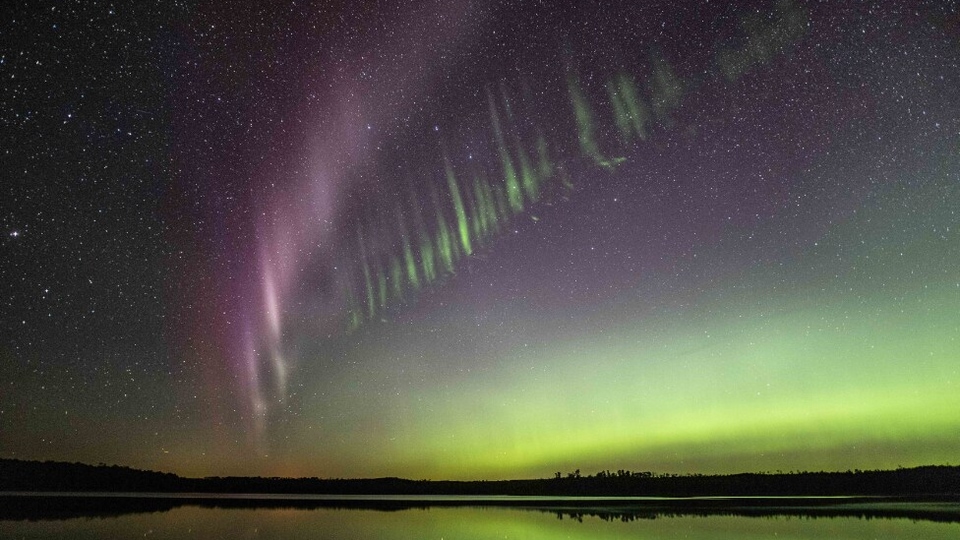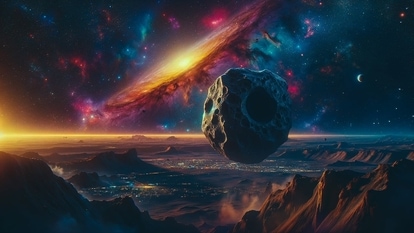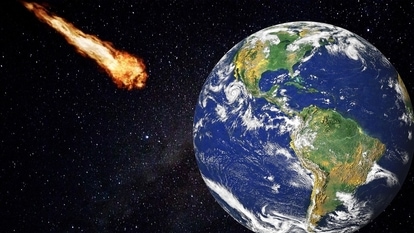Mysterious STEVE appears after the STRONGEST solar storm in 6 years hits Earth
A strange phenomenon known as STEVE or Strong Thermal Emission Velocity Enhancement has been seen in Earth skies after one of the strongest solar storms to be seen in more than half a decade struck the planet recently.






 View all Images
View all ImagesOn March 23, a massive and powerful cloud of coronal mass ejections struck the Earth and caused a terrifying solar storm event that no one saw coming. Due to the cracks on the magnetic fields of Earth, the particles seeped into the upper atmosphere and sparked a G4-class geomagnetic storm. The storm caused radio blackouts, GPS disruptions and aurora displays. But it also triggered a very mysterious phenomenon called STEVE or Strong Thermal Emission Velocity Enhancement. The phenomenon flashed a bright stream of light across the sky which was not like any aurora even seen.
The phenomenon was also reported by SpaceWeather.com which noted in the March 25 entry of its website, “STEVE (Strong Thermal Emission Velocity Enhancement) looks like an aurora, but it is not. The phenomenon is caused by hot (3000°C) ribbons of gas flowing through Earth's magnetosphere at speeds exceeding 6 km/s (13,000 mph). These ribbons appear during strong geomagnetic storms, revealing themselves by their soft purple glow”. The phenomenon was seen over South Dakota, Washington State, Idaho, Idaho again, Montana and Scotland.
Mysterious STEVE seen in the aftermath of severe solar storm
STEVE is a very recent discovery. It was officially discovered in 2016 by citizen scientists and aurora hunters in northern Canada, according to Live Science. It was later verified by European Space Agency's (ESA) Swarm satellites. The purple glow is formed due to excessively hot (more than 3000 degrees Celsius) gas ribbons that move through the magnetosphere of the Earth. These gas ribbons typically move much faster than the air surrounding it and when it comes in contact with the radiation of solar storms, it gives out a band of glowing color. These are different from auroras because they are not caused by solar radiations colliding with atoms of oxygen and nitrogen through a process called refraction.
While this is still a superficial understanding of the chemical and physical activities that are taking place to cause this strange phenomenon, it does make for a stunning view across the sky. As for whether it can affect us, so far no evidence shows that these light displays are in any way harmful for us or the planet.
In recent times, STEVE was seen in August 2022 when the Earth was hit by yet another surprise solar storm event.
Tech behind solar observation
While many space agencies from NASA with its Solar Dynamics Observatory (SDO) to National Oceanic and Atmospheric Administration (NOAA) keep track of Sun-based weather phenomena, one that particularly stands out is the DSCOVR satellite by NOAA. The satellite became operational in 2016 and tracks different measurements of the Sun and its atmosphere including temperature, speed, density, degree of orientation and frequency of the solar particles. The recovered data is then run through the Space Weather Prediction Center and the final analysis is prepared.
Catch all the Latest Tech News, Mobile News, Laptop News, Gaming news, Wearables News , How To News, also keep up with us on Whatsapp channel,Twitter, Facebook, Google News, and Instagram. For our latest videos, subscribe to our YouTube channel.
































